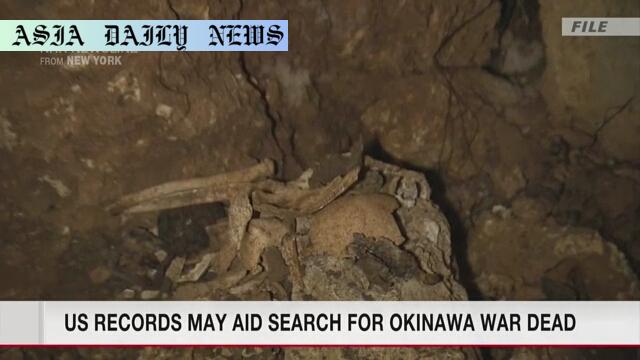Battle of Okinawa reveals valuable US military records for locating the remains of thousands who perished during the war.
- The Battle of Okinawa saw over 200,000 casualties, with many remains still missing.
- Japanese researchers are looking to US burial records from 1945 to locate victims.
- Researcher Hosaka Hiroshi and the prefectural organization believe these records are highly credible.
- Historic burial data reveals key locations and mass burial figures from the war.

Unveiling the Battle of Okinawa’s Tragic Legacy
The Battle of Okinawa, one of the most devastating ground conflicts of World War II, left an indelible mark on the history of Japan. Taking place in the southwestern Japanese prefecture of Okinawa, this battle claimed the lives of more than 200,000 individuals, a number that included soldiers and civilians alike. Astonishingly, even after eight decades, the remains of countless victims remain unfound, leading to a persistent and emotional quest by families, local organizations, and historians. A recent effort by a Japanese organization, with significant help from US military records, may finally provide answers to long-term questions surrounding these missing individuals. The use of this documentation reflects a deep commitment to historical truth and honoring those who perished in such dire circumstances.
The Untapped Potential of US Military Records
Recently, US military records from the 1945 battle have emerged as potential tools for uncovering burial sites and aiding recovery efforts. These records were created by a special US unit whose responsibility was to arrange for the burial of remains found near battlegrounds. Such documentation includes specific details about burial locations, dates, and numbers of individuals interred. Researchers, including Hosaka Hiroshi, an expert on the Battle of Okinawa, have discovered and verified these archives in the US National Archives. According to the documents, mass burials occurred after pivotal moments in the battle, such as the failed Japanese offensive on May 4, 1945. On May 5 alone, in the Makiminato area of Urasoe Village, more than 70 people—residents and soldiers—were laid to rest. Using this data could guide efforts to pinpoint long-lost sites of collective burials and honor victims more appropriately.
The Emotional Drive Behind the Search
For individuals like Gushiken Takamatsu, who has spent years searching for remains from the tragic battle, the discovery of such US records is monumental. The detailed and credible insights within these records provide a more guided approach, drastically increasing the chances of recovering remains. Gushiken has emphasized that this historical pursuit is essential not only for honoring the deceased but also for granting closure to surviving families and communities in Okinawa. Such efforts could redefine the potential of international cooperation in responding to wartime tragedies and shed light on similar efforts worldwide. The historical and emotional weight of these records is a powerful motivator to persevere, regardless of the time elapsed since the battle.
Global Implications of Historical Research
The advancements in uncovering wartime remains, as exemplified by using the US records, carry implications far beyond Japan’s borders. They exemplify how archives maintained by one nation can provide context, resolution, and reconciliation in another. This not only underscores the enduring relevance of historical documentation but also the global obligation to preserve such records. For student historians, archivists, and policymakers, the story of the Battle of Okinawa serves as a reminder of the shared humanity in wartime loss. By prioritizing efforts to secure the remains of such victims and upholding collective memorialization, society takes a bold step in confronting the realities of its past.



Commentary
An Effort Worthy of Praise
The discovery and planned use of US burial records to locate victims of the Battle of Okinawa is a significant step in preserving historical memory. The meticulous documentation created during the turmoil of war stands as a testament to humanity’s ability to preserve evidence during even the darkest times. Translating this evidence into current actions that could bring peace and closure to families is both commendable and reflective of the essence of empathy. The idea of using such archival material to provide closure after nearly a century establishes a powerful precedent for historical research worldwide.
Remembering the Personal Cost of War
On a deeply personal level, efforts like these showcase the enduring grief and collective trauma experienced by those affected. Over 200,000 individuals perished during the Battle of Okinawa, and the families left behind have spent decades yearning for answers. Understanding that mass burials and abandoned remains were common during such battles sheds light on the human cost of war—a reminder that the horrors of these conflicts should never be forgotten. Documenting and honoring these voices could inspire better awareness of the devastating reality of wartime decisions.
Contributing to a Broader Narrative
From historians to government officials, everyone involved in these search efforts plays a vital role in constructing a comprehensive narrative not just of battle but also of loss, dignity, and recovery. It also reaffirms the importance of international collaboration in pursuing truth and justice. By intertwining research, empathy, and action, we can ensure that the sacrifices of the past are remembered while imparting lessons for future generations to never repeat such devastating histories. The symbolic and practical significance of uncovering these remains is invaluable both for Okinawa and the global community.